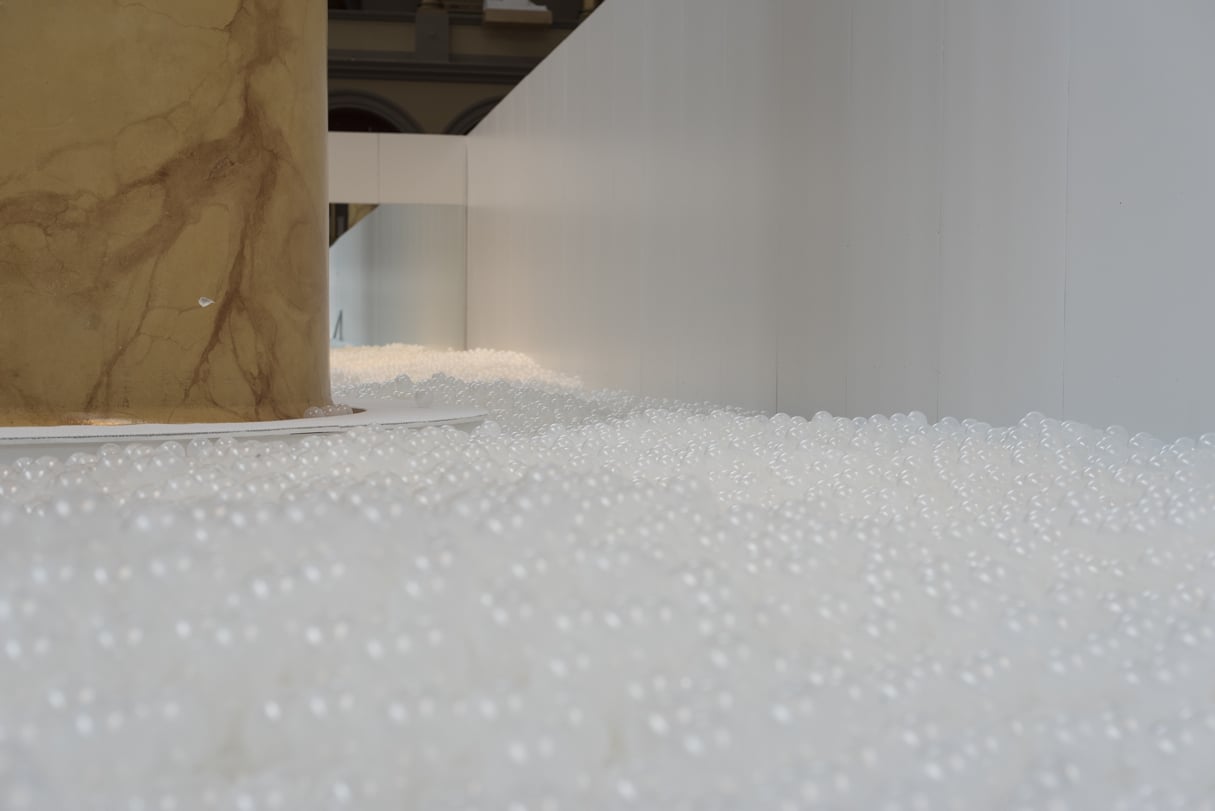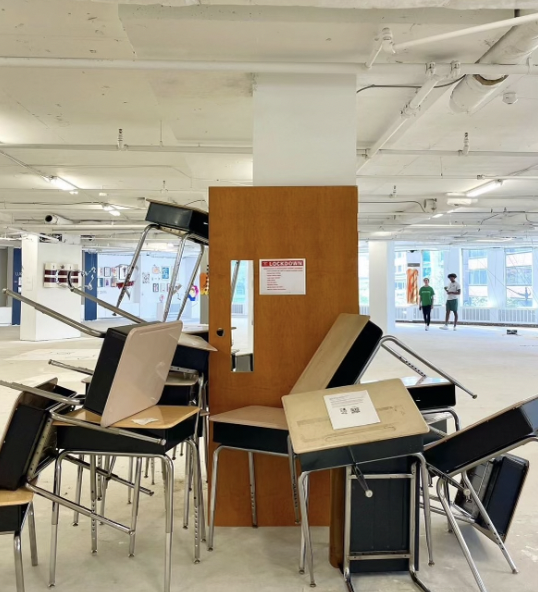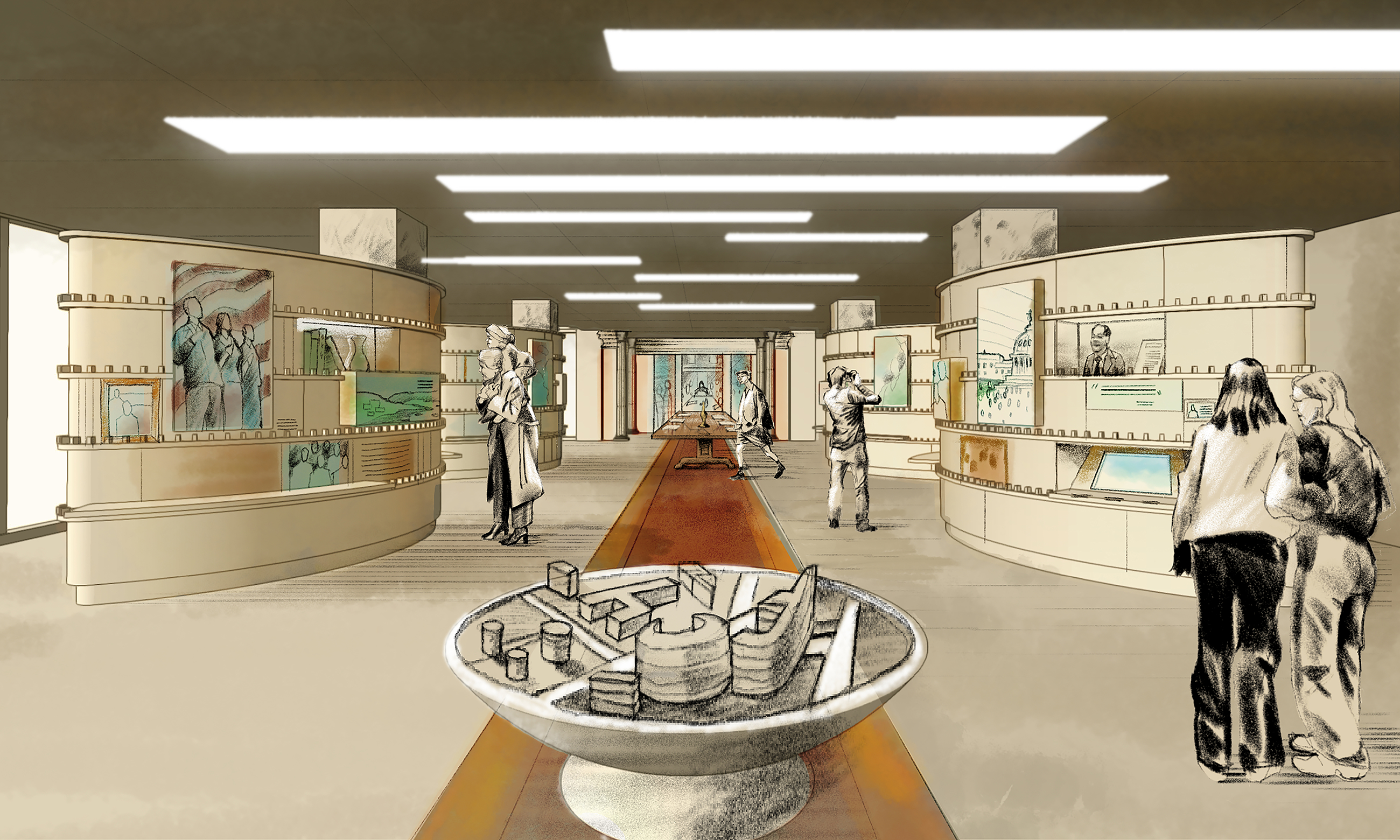So many people are clamoring to visit the National Building Museum’s “Beach” exhibit before it closes that the museum will stop selling advance tickets on its website next Friday. The exhibit, which simulates a shoreline with a sloping, sandy-feeling carpet, deck chairs, and—most notably—a pool filled with 1 million polyethylene balls, has brought in more foot traffic than any exhibit in the musuem’s recent history.
Created by Brooklyn-based design firm Snarkitecture, the “Beach” has had about 110,000 visitors since it opened July 4, says Brett Rodgers, the Building Museum’s communications director. By comparision, last summer’s marquee installation, a giant maze by the Dutch architect Bjarke Ingels, sold 50,000 tickets between July 4 and Labor Day.
With the “Beach” on track to triple the maze’s numbers, the Building Museum will cut off advance ticket sales next week. Walk-up tickets will still be available until the exhibit’s last day on September 7, and “all tickets are created equally,” Rodgers says.
Beside the coming online-ticket-sale moratorium, the “Beach” has brought plenty of other oddities. For one thing, the Building Museum has had to drastically expand its lost-and-found operation with the number of personal effects that people wading in the ball pit lose during their experiences. Rodgers says the museum’s staff has recovered many phones, pairs of glasses, keys, Fitbit wristbands, and even a few engagement rings. The oddest find, though, happened Wednesay morning when a museum employee found an unopened box of cupcakes sitting in the ball pit, left over from the previous evening’s DC Beer Week event.
“Maybe it was a gift for us,” Rodgers says.
Rodgers adds that while the museum is attempting to reconnect lost items with their owners, the “Beach” might wind up giving the institution a little extra fundraising when it closes. While the staff hopes to return phones, purses, and wallets to the right people, loose cash and coins found at the bottom of the pit will most likely be donated to the museum.


















